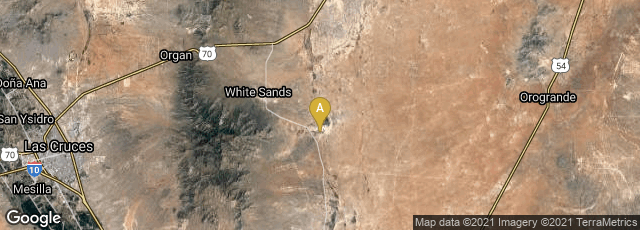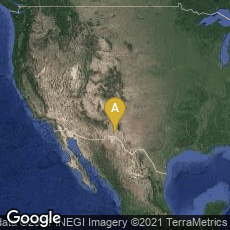

A: White Sands Missile Range, New Mexico, United States
On October 24, 1946 a movie camera in the V-2 No.13 rocket launched from the White Sands Rocket Proving Ground took the first photograph of the earth from outer space. At the time the photograph was taken the rocket was 65 miles (105 km) from the earth, and the camera was theoretically 720 miles from the horizon. The famous photograph was taken with an attached DeVry 35 mm black-and-white movie camera of the type used to take newsreels. The camera was set to take one picture every 1.5 seconds.
To modify the rocket for scientific research scientistsfrom the Applied Physics Laboratory, Johns Hopkins University, at White Sands, including the German Rocket Team, replaced the space in the rocket that would have held an explosive warhead with a package of scientific instruments, including eight movie cameras, with the hope that at least some of the cameras and exposed film might be recovered.
The resulting images, developed from film dropped back to Earth in a tough steel canister, were like nothing that had been seen before. Until this point, the highest vantage point from which photos had been taken was some 22 km, aboard a high-altitude balloon.
The balloon pictures had shown the curvature of the Earth at the horizon, but the rocket photos opened new possibilities. Clyde Holliday, the engineer who developed the camera, saw the potential: in a 1950 National Geographic article, he predicted that one day “the entire land area of the globe might be mapped in this way”.
Newell, High Altitude Rocket Research (1953) 284-288. Krause, “High altitude research with V-2 rockets,” Proceedings of the American Philosophical Society 91 (1947) 430-446.